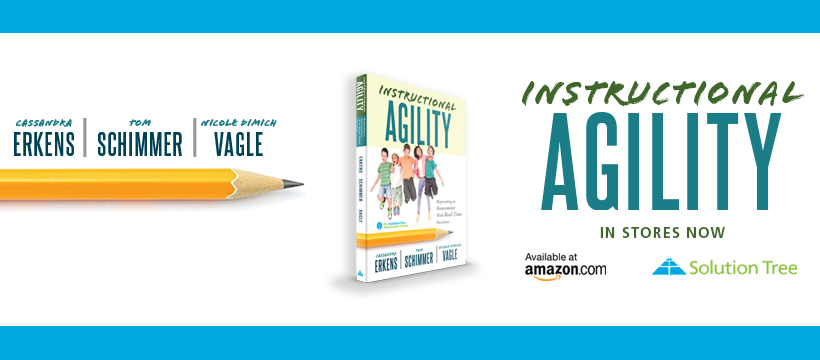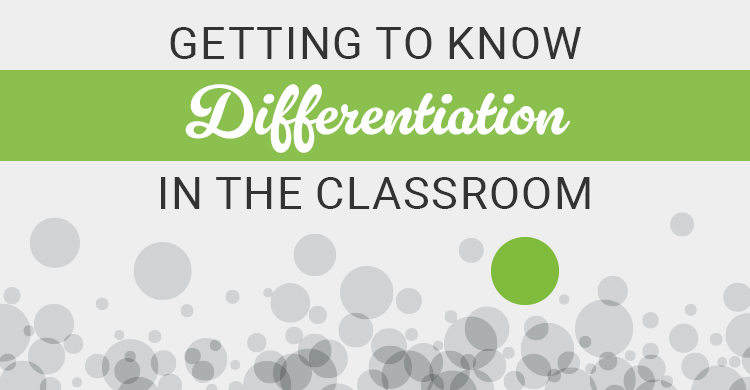The short answer to this question is no. For several decades now, research has been quite emphatic that grades and scores can interfere with a student’s willingness to keep learning. From Ruth Butler (1988), to Kluger and DeNisis (1996), to John Hattie and Helen Timperley (2007), to Dylan Wiliam (2011), to Ruiz-Primo and Li (2013)—the research has clearly shown near-unanimous agreement that feedback improves student learning and that the most favorable course of action is feedback in the absence of grades or scores.
In the orthodoxy of assessment, formative grades are an oxymoron since the formative and summative uses serve different priorities. We assess to gather information about student learning and either use that information formatively to advance learning or use it summatively to verify that it has occurred.
The conflict with formative grades occurs when students settle for an initial score that they deem to be satisfactory, even when the primary purpose of that formative moment was to identify strengths, areas in need of strengthening, and next steps. In this case, they may see the teacher’s feedback as unnecessary, since from their perspective, the identified score/level is good enough.
It is also possible for a student who scores unexpectedly low to deem the feedback to be undesirable. If the primary purpose of formative assessment is to initiate more learning through feedback, and the result of grading formative assessment stops that learning, then clearly the practice has missed the mark.
In Embedded Formative Assessment, Dylan Wiliam makes the case that classroom formative assessment is the most impactful and cost-effective approach to raising student academic achievement—that assessment practices that are embedded within the natural instructional cycle provide a way for teachers to envision formative assessment as more a verb than a noun and that the focus of the assessment experience is really about the subsequent action as result of the elicited evidence.
This is something my colleagues (Nicole Vagle and Cassandra Erkens) and I emphasized in our book Instructional Agility. With formative assessment, a teacher’s priority should be on making real-time instructional decisions. In doing so, teachers and students can move seamlessly between instruction, assessment, and feedback to enhance student engagement, proficiency, and ownership of learning.
With all of that said, classroom teachers don’t live in the orthodoxy of anything, and while there are important lessons and cues research has bestowed upon us, many of us have also learned that assessment is often context-dependent and nuanced. There are very few absolutes when it comes to the use of assessment. While research does clearly give us the most favorable course of action, we’ve also learned that there are always exceptions to the rule. So, a more practical answer to the question of whether formative assessment should be graded might be maybe.
The emergence of the online gradebook has certainly made this issue more complicated. With so many parents now having access to their child’s assessment results, communication has never been more efficient. It is, however, slightly cynical to promise parents regular updates but to never populate the gradebook or provide those updates since the formative purpose dominates the instructional paradigm.
This is not a suggestion that the “tail wag the dog,” in that our gradebook craft our formative assessment routines, nor is it a suggestion that formative assessment directly contribute toward a proficiency grade; however, it is a suggestion that orthodoxy is easy to proclaim, especially in blog posts or tweets, but that the complexities of the field are more nuanced. Other educators (i.e., guidance counselors, administrators) may utilize the online gradebooks for initial indicators as to whether a student is current with his or her work and whether intervention (academic or behavioral) might be necessary. No, the gradebook will not provide all of the necessary information to intervene with depth, but in large schools especially, the gradebook can be a piece of information that initiates further exploration is required. If teachers never populate the gradebook, then some efficiency is lost both internally and with keeping parents up to date. Formative grades can simply be assigned zero-weight or be tagged as no-count in the gradebook.
Somewhere in between, as is the case with most things assessment, is the sweet spot. While grades/scores may cause a counterproductive response in some students—and that is concerning—every teacher knows there are others who appreciate knowing their overall level of quality and what they can do to advance their proficiency. The extreme positions—grading everything or nothing—tend to be unhelpful for those in the field, as there are often factors they have to contend with that sit beyond their sphere of control. While it’s easy to say, “Don’t grade formative assessment,” teachers may face a school or board policy that requires gradebook entries at regular intervals. The flaws in this kind of policy are obvious and plentiful, but simply pointing them out is unhelpful to the teacher who is caught between orthodoxy and policy.
To answer maybe to the question of grading formative assessment, here are some considerations when crafting practices and routines:
-
Watch how students respond
The most critical element of any feedback routine is whether the feedback elicits a productive response from the recipient. When students receive feedback that balances strengths with that which needs strengthening, as well as a score/grade, pay close attention to whether each student becomes fully invested in advancing his or her level of performance. If they do, no harm, no foul. If they don’t, then find out if, in fact, it is the score that’s stopping them. If it is, consider withholding the formative score until such time as the student is willing to commit to taking subsequent action.
-
Create time for using feedback
If formative scores are in play, create time during class for students to develop a habit of correction. Good is more likely to be good enough if students are left on their own to advance their learning. By creating the time and space for students to act upon the feedback in class, teachers solve two potential issues:
- The teacher is now present to clarify any confusion the student might have on what’s next.
- The teacher can observe firsthand the level of willingness to keep advancing the quality of what the student is producing.
Creating this time can be challenging, but developing a default habit of correction is a critical disposition that will serve students well.
-
Grade as close to the standards as possible
Scores and grades on elements within a learning progression distant from the cognitive complexity of the standards send mixed messages and stifle the momentum of instruction. The mixed messages come from success on knowledge-based recall items, for example, when the standard is far more complex. Knowing the definitions of the three types of irony is important to, but a long way from, being able to use irony in an original composition. So, on the one hand, knowing all three definitions is a positive, but to report a perfect score in the gradebook may give a false sense of proficiency since the assessment of the definitions in no way indicative of their ability to incorporate irony in original writing.
The definitions are the initial and critical part of the learning progression, but grading that formative moment seems inefficient and could serve to distract from the larger goal, interfering with the flow of instruction. However, finding examples of irony in literature and being able to thoroughly explain how an author incorporated irony naturally throughout the story is closer to the ultimate goal and would be more indicative of how ready the student is to meet the standard going forward. Again, these formative grades should not directly contribute to determining proficiency.
-
Score formative assessment sparingly
The idea that there could be a place to grade formative work should in no way be misconstrued as an endorsement to do it frequently. A balanced assessment system uses assessment for both the formative and summative purposes, but prioritizes initiating more learning and not measuring it. Grading does not improve learning, in the same way a scale does not cause someone to lose weight. Increasing the frequency with which one steps on the scale is irrelevant, though periodically stepping on the scale does provide an indicator as to what progress is being made. The action—the feedback—is what causes progress to be made. Grading formative assessment? Maybe. Grading formative assessment every day? Not at all.
-
Remove the “formative” label when assessing standards
When assessing the standards at their full cognitive complexity, simply assess the standards. For those who have reached proficiency via an adequate sampling, use their results summatively to indicate their achievement. For those who haven’t, use their results formatively, identify strengths and areas in need of strengthening, create a plan to close the gap, and then reverify. Every assessment can serve both purposes and can, retroactively, become formative when new results emerge. Making students repeat a standards-level assessment simply because the initial one was labeled formative is unnecessarily redundant and inefficient.
The balance between orthodoxy and reality can be challenging, since most teachers want to be as aligned as possible with what research favors. When that’s not possible, we need to be open to finding routines that honor the research yet satisfy the contextual norms. Proceed with caution; maybe doesn’t mean full steam ahead with a return to grading everything. It does mean there can be a time and space where formative scores indicate and communicate a student’s current trajectory in a more finite manner. Again, teachers who keep the research in mind as they observe how their students respond to a variety of practices and routines will most often find the rhythm of feedback and grading that is most right for their context.
References:
Butler, R. (1988). Enhancing and undermining intrinsic motivation: The effects of task-involving and ego-involving evaluation on interest and performance. British Journal of Educational Psychology, 58(1), 1–14.
Hattie, J., & Timperley, H. (2007). The power of feedback. Review of Educational Research, 77(1), 81–112.
Kluger, A. N., & DeNisi, A. (1996). The effects of feedback interventions on performance: A historical review, a meta-analysis, and a preliminary feedback intervention theory. Psychological Bulletin, 119(2), 254–284.
Ruiz-Primo, M. A., & Li, M. (2013). Examining formative feedback in the classroom context: New research perspectives. In J. H. McMillan (Ed.), SAGE handbook of research on classroom assessment (pp. 215–232). Thousand Oaks, CA: SAGE.
Wiliam, D. (2011). Embedded formative assessment. Bloomington, IN: Solution Tree Press.[author_bio id=”398″]






